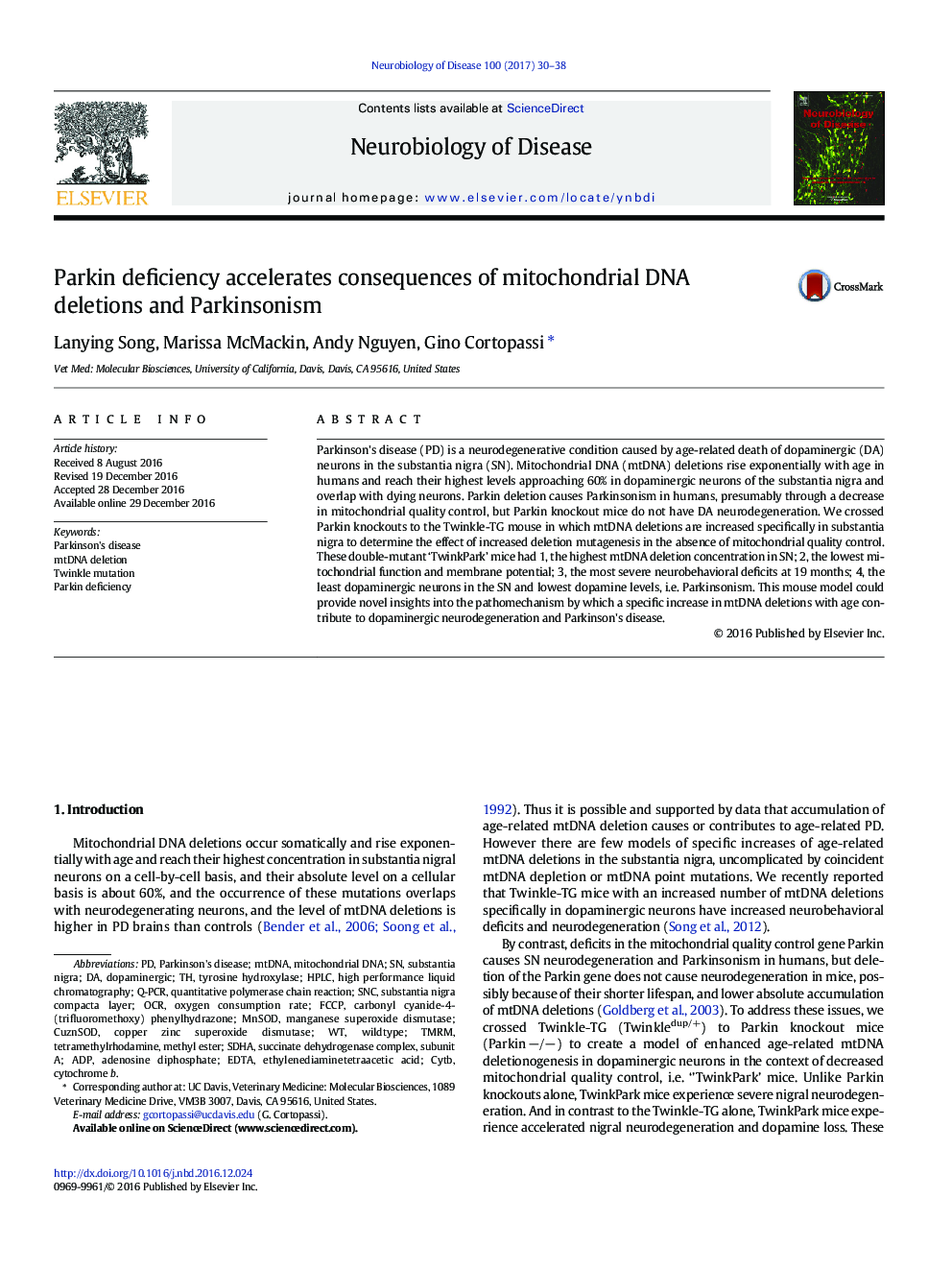| Article ID | Journal | Published Year | Pages | File Type |
|---|---|---|---|---|
| 5630663 | Neurobiology of Disease | 2017 | 9 Pages |
â¢'TwinkPark' mice with Parkin knockout and increased mtDNA deletions have been created.â¢TwinkPark mice have increased mtDNA deletion accumulation with age in SN.â¢TwinkPark mice have significantly decreased dopamine and TH in striatum.â¢TwinkPark mice have severe neurobehavioral deficits.
Parkinson's disease (PD) is a neurodegenerative condition caused by age-related death of dopaminergic (DA) neurons in the substantia nigra (SN). Mitochondrial DNA (mtDNA) deletions rise exponentially with age in humans and reach their highest levels approaching 60% in dopaminergic neurons of the substantia nigra and overlap with dying neurons. Parkin deletion causes Parkinsonism in humans, presumably through a decrease in mitochondrial quality control, but Parkin knockout mice do not have DA neurodegeneration. We crossed Parkin knockouts to the Twinkle-TG mouse in which mtDNA deletions are increased specifically in substantia nigra to determine the effect of increased deletion mutagenesis in the absence of mitochondrial quality control. These double-mutant 'TwinkPark' mice had 1, the highest mtDNA deletion concentration in SN; 2, the lowest mitochondrial function and membrane potential; 3, the most severe neurobehavioral deficits at 19Â months; 4, the least dopaminergic neurons in the SN and lowest dopamine levels, i.e. Parkinsonism. This mouse model could provide novel insights into the pathomechanism by which a specific increase in mtDNA deletions with age contribute to dopaminergic neurodegeneration and Parkinson's disease.
